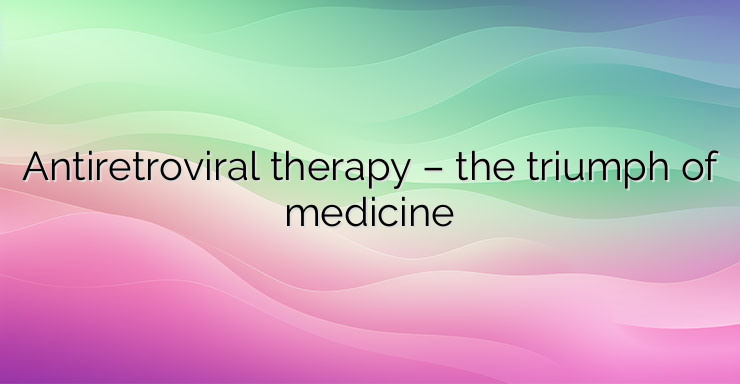Efforts to prevent HIV transmission through antiretroviral therapy are particularly fruitful from a societal and economic perspective. They are also a huge relief for HIV-positive individuals and their HIV-negative partners, emotionally, financially and purely physically. The World Health Organization recommends starting antiretroviral treatment when the number of CD4+ (read CD 4 positive) blood cells falls below 350 per milliliter of blood. CD4+ cells have a central role in coordinating the immune response, without them the immune system collapses and the body becomes susceptible to opportunistic infections and malignant neoplasms. The key point in stopping the spread of the virus is lowering the viral load – the content of viral particles in the blood – through antiretroviral therapy. Studies show that the risk of transmitting the virus to another person is almost zero when the viral load is below 1500 viral particles per 1 milliliter of blood. Studies in serodifferent couples have shown that active antiretroviral therapy started at CD4+ cells below 550/ml of blood reduces the risk of infection of the seronegative partner by 96%. The application of the therapy to drastically reduce the viral load in pregnant women makes it possible to give birth to a seronegative fetus. Today, advances in anti-HIV therapy enable HIV-positive women to conceive and give birth to a healthy fetus free of the burden of HIV/AIDS. Children are most vulnerable to HIV infection. According to the World Health Organization, without treatment, the mortality in children is 50% by the age of 2 years and 80% by the age of 5 years. According to the WHO, of the 2.1 million children in need of antiretroviral treatment, only 23% receive it, compared to 48% for adults. Antiretroviral therapy has great hopes for eliminating pediatric HIV/AIDS, primarily by stopping mother-to-child transmission. NEWS_MORE_BOX Antiretroviral therapy reduces the incidence of HIV-associated opportunistic infections and tuberculosis. According to WHO data, in 2010 there were 34 million people living with HIV infection worldwide. Of these, 1.1 million have active tuberculosis, the death rate of which is about 350,000 per year. The preventive use of isoniazid combined with antiviral drugs reduces the risk of active tuberculosis by 97%. All this has led to significant progress in the fight against HIV in the last 10 years and to a remarkable improvement in the quality and length of life of those infected. Scientists estimate that regular and correct administration of current anti-HIV therapies provides survival of 30 years or more. Even more advanced treatments are on the way, which are expected to turn HIV into mild chronic infections or even eradicate it altogether. The possible creation of a vaccine – something considered absolutely impossible 10 years ago, is actually achievable in the next 10-15 years according to most specialists. Undoubtedly,medicine has achieved a lot in the fight against the scourge of the XXI century. She has given us enough to deal with this disease, both personally and socially. From here on, the responsibility for our health is in our own hands.


Leave a Reply